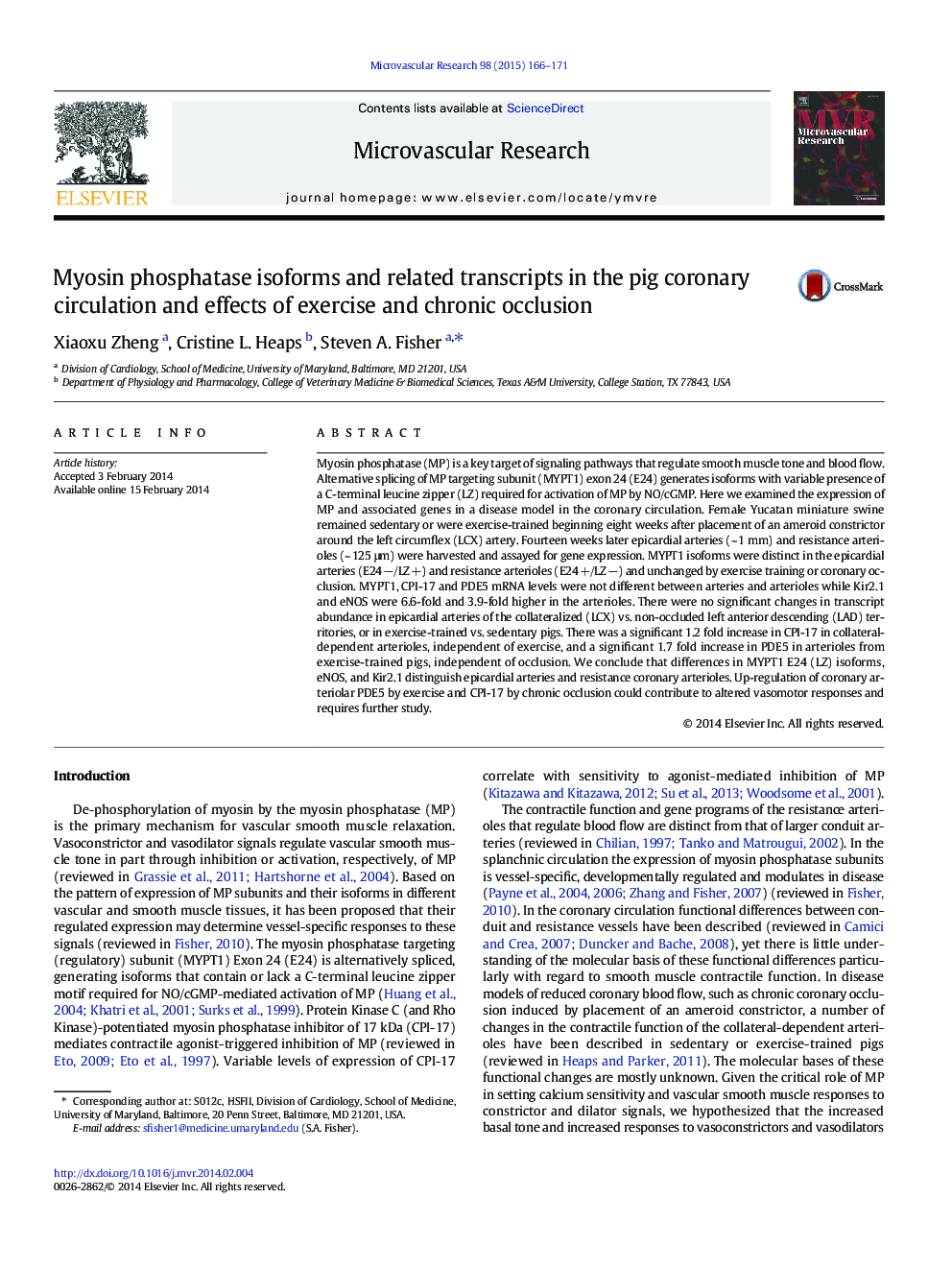| Article ID | Journal | Published Year | Pages | File Type |
|---|---|---|---|---|
| 1994829 | Microvascular Research | 2015 | 6 Pages |
Abstract
Myosin phosphatase (MP) is a key target of signaling pathways that regulate smooth muscle tone and blood flow. Alternative splicing of MP targeting subunit (MYPT1) exon 24 (E24) generates isoforms with variable presence of a C-terminal leucine zipper (LZ) required for activation of MP by NO/cGMP. Here we examined the expression of MP and associated genes in a disease model in the coronary circulation. Female Yucatan miniature swine remained sedentary or were exercise-trained beginning eight weeks after placement of an ameroid constrictor around the left circumflex (LCX) artery. Fourteen weeks later epicardial arteries (~ 1 mm) and resistance arterioles (~ 125 μm) were harvested and assayed for gene expression. MYPT1 isoforms were distinct in the epicardial arteries (E24 â/LZ +) and resistance arterioles (E24 +/LZ â) and unchanged by exercise training or coronary occlusion. MYPT1, CPI-17 and PDE5 mRNA levels were not different between arteries and arterioles while Kir2.1 and eNOS were 6.6-fold and 3.9-fold higher in the arterioles. There were no significant changes in transcript abundance in epicardial arteries of the collateralized (LCX) vs. non-occluded left anterior descending (LAD) territories, or in exercise-trained vs. sedentary pigs. There was a significant 1.2 fold increase in CPI-17 in collateral-dependent arterioles, independent of exercise, and a significant 1.7 fold increase in PDE5 in arterioles from exercise-trained pigs, independent of occlusion. We conclude that differences in MYPT1 E24 (LZ) isoforms, eNOS, and Kir2.1 distinguish epicardial arteries and resistance coronary arterioles. Up-regulation of coronary arteriolar PDE5 by exercise and CPI-17 by chronic occlusion could contribute to altered vasomotor responses and requires further study.
Related Topics
Life Sciences
Biochemistry, Genetics and Molecular Biology
Biochemistry
Authors
Xiaoxu Zheng, Cristine L. Heaps, Steven A. Fisher,
